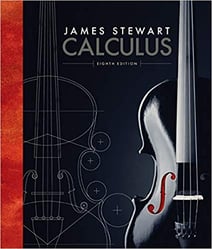
This posts contains a Teaching Explanation.
You can buy Calculus by Stewart here.
Why You Should Trust Me: I’m Dr. Fred Zhang, and I have a bachelor’s degree in math from Harvard. I’ve racked up hundreds and hundreds of hours of experience working with students from 5th grade through graduate school, and I’m passionate about teaching. I’ve read the whole chapter of the text beforehand and spent a good amount of time thinking about what the best explanation is and what sort of solutions I would have wanted to see in the problem sets I assigned myself when I taught.
Question: If $f(z) = z - √(2-z)$ and $g(u) = u - √(2-u)$ is it true that f =g?
Page in 8th Edition: 19
Short Answer: Yes, it is true that f=g because the equation for g is exactly the same as that for f, except with x replaced by u.
Homework Answer: Because the equation for f(x) and g(u) are the same, this means that for all valid inputs for function f, the function f and g give the same output.
In other words, for all valid z, $f(z) = z - √(2-z) = g(z)$.
Motivated Answer:
This question is asking if f = g. What does it mean for two functions to be equal? We know that 2 = 2, and if someone asks, does 2=3? We know the answer is “no”, but does f = g?
Remember, functions take in inputs, and spit out outputs. Two functions f and g are only equal if they always give you the same output no matter what the input is.
Let’s see what happens if we put in any valid input z into f. We get $f(z) = z - √(2-z)$. Now let’s put that same z into g, and we get $g(z) = z - √(2-z)$. These two are the same, and so f and g are the same.
This question is a bit of a trick. The textbook writes $g(u) = u - √(2-u)$, but they could have just written $g(x) = x - √(2-x)$. This would have made it much more clear that f = g.
There are two key learning points to take away:
- Two functions can be the same even if the equations look different written out.
- The above point is NOT true in reverse: If you substitute the same variable z into two functions’ equations, and can get the equations to look the same, then the functions are the same.
Video Solution:
These recommendations are based solely on our knowledge and experience. If you purchase an item through one of our links, PrepScholar may receive a commission.










